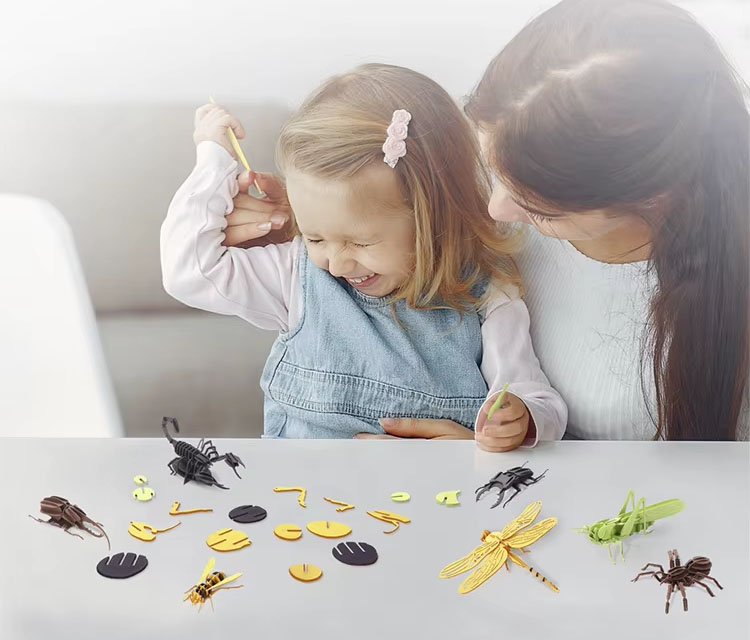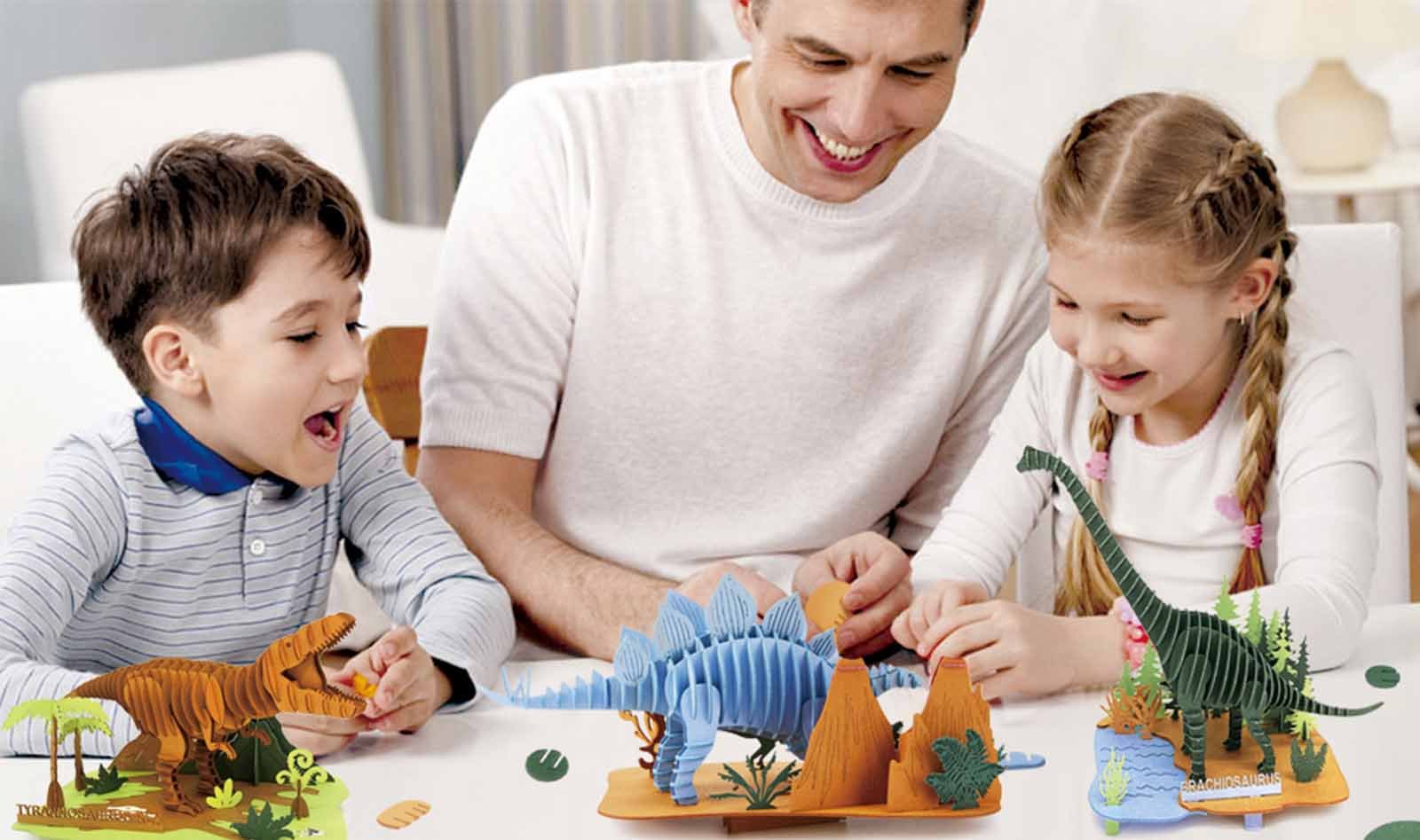Key Takeaways
- Paper toys are eco-friendly, biodegradable, and reduce long-term environmental impact.
- They are lightweight, safe, and made without harmful chemicals—perfect for children.
- Paper toys promote creativity, problem-solving, and hands-on learning.
- Plastic toys are flashy but often break easily and contribute to global waste.
- Choosing paper toys supports sustainability while providing meaningful play experiences.
Paper Toys vs. Plastic Toys: Environmental Impact
Why Are Paper Toys More Sustainable?
Paper toys are usually made from eco-friendly or recycled paper materials, which are biodegradable and environmentally safe. Unlike plastic toys that linger in landfills for centuries, paper toys naturally decompose, reducing waste and ecological harm.
Additionally, paper toy production consumes less energy and supports sustainable manufacturing practices, making them an excellent choice for eco-conscious parents.
How Plastic Toys Contribute to Landfill Problems
Plastic toys are made from non-biodegradable materials. Once discarded, they can take hundreds of years to break down. With millions of tons of plastic waste generated every year—including toys—the environmental burden continues to grow.
Worse still, plastic production releases harmful pollutants, and less than 10% of plastic waste is actually recycled. This means most plastic toys end up in landfills or oceans, causing long-term damage.
Paper Toys vs. Plastic Toys: Durability and Safety
-Comparing Durability
At first glance, plastic may seem stronger, but modern paper toys—especially 3D paper puzzles and paper models—are designed with reinforced paperboard and interlocking structures that provide surprising durability. Once assembled, they can last for years as decorative or functional toys.
Plastic toys, on the other hand, often crack or break into small, sharp pieces that can be hazardous to children.
-Safety Advantages of Paper Toys
Paper toys are free from BPA, phthalates, and other harmful chemicals commonly found in plastics. They use non-toxic printing and child-safe adhesives.
They are lightweight, smooth, and free from sharp edges, minimizing the risk of injury.
Plastic toys, especially low-quality ones, can release harmful chemicals under heat or pressure, which may pose health risks to children.
Paper Toys vs. Plastic Toys: Encouraging Creative Play
Paper toys are often DIY, puzzle-based, or assembly-focused, which naturally stimulate problem-solving and creativity. Children can fold, build, and decorate paper models, giving them a sense of ownership and accomplishment.
Unlike pre-programmed plastic toys with lights and sounds, paper toys provide open-ended play. A child can transform a paper puzzle into an animal, a house, or a castle—only limited by imagination. This type of play improves focus, motor skills, and cognitive development.
What to Consider When Buying Paper Toys
- Eco-Friendly Materials: Choose toys made from FSC-certified or recycled paper.
- Non-Toxic Printing: Look for safe inks and adhesives to ensure child safety.
- Age Appropriateness: Select simple puzzles for toddlers and more advanced models for older children.
- Educational Value: Opt for puzzles, 3D models, or activity sets that combine fun with learning.
Types of Paper Toys for Kids
-3D Paper Puzzles: Enhance shape recognition and logical thinking

3D paper puzzles are more than just fun activities—they help children recognize shapes, patterns, and structures while strengthening their logical thinking. As kids match and assemble the pieces step by step, they learn to analyze, plan, and solve problems independently. These puzzles combine play and learning, making them an ideal tool for cognitive development. Puzzlify is a professional 3D paper puzzle factory based in China, dedicated to wholesale and customizing various puzzles.
-3D Paper Models: Improve spatial awareness and hands-on skills
Building 3D paper models gives children a tangible understanding of space and dimension. By folding, inserting, and assembling each component, they develop fine motor control and hand-eye coordination. This hands-on process also enhances their ability to visualize how different parts connect, laying the foundation for future interest in design, architecture, or engineering.
-DIY Paper Craft Kits: Inspire creativity and self-expression
DIY paper craft kits empower children to design and build unique creations with their own hands. From choosing colors to personalizing details, every step encourages imagination and self-expression. These crafts not only boost artistic confidence but also provide a sense of accomplishment when kids see their finished work proudly displayed.
The Value of Simple Paper Toys
Simple paper toys often provide the most meaningful learning experiences. For example, a set of paper blocks or animal cutouts can spark endless imaginative play.
Unlike plastic toys that overwhelm children with sounds and flashing lights, paper toys allow them to focus, explore, and interact more deeply. This simplicity supports better attention spans and stronger emotional connections during play.
Common Misconceptions About Paper Toys
- “Paper toys are too fragile.” → Modern designs use thick, durable paperboard, making them sturdy once assembled.
- “Plastic toys are more fun.” → Paper toys bring hands-on creativity and DIY fun, which often engages children longer.
- “Paper toys are too simple.” → Many paper toys include complex puzzles and detailed 3D models that challenge older kids and even adults.
Conclusion
Choosing paper toys over plastic toys is not just about fun—it’s about safety, sustainability, and education. Paper toys are lightweight, biodegradable, and safe for children while offering valuable opportunities for creativity and learning.
The next time you’re shopping for toys, consider eco-friendly paper toys. They’re more than just playthings—they’re an investment in your child’s development and a better future for our planet.
Frequently Asked Questions
Are paper toys better than plastic toys?
Yes. Paper toys are safer, eco-friendly, and educational. While plastic toys may seem more durable at first, paper toys provide longer-term value through creativity and sustainability.
Do paper toys help children’s development?
Absolutely. They encourage problem-solving, creativity, fine motor skills, and cognitive growth.
Why do parents choose paper toys?
Parents prefer paper toys because they are safe, chemical-free, environmentally friendly, and highly educational, making them ideal for both fun and learning.
